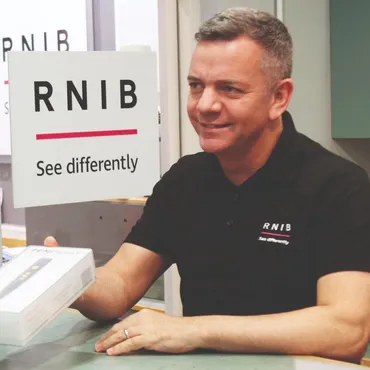Tripling the number of hearing dog volunteers by simplifying the recruitment process
Hearing Dogs for Deaf People had lots of eager puppies waiting to be trained as assistance dogs, but not enough volunteers to help. With more new litters being born, we needed to find a way to boost the number of volunteer applications — and fast.

Hearing Dogs for Deaf People

The results
- 40% increase in form submissions
- 81% increase in successful applications
- 13% improvement in social media conversion rate
The client
Hearing Dogs for Deaf People
Hearing Dogs for Deaf People train clever dogs to alert deaf people to a range of important sounds. From a doorbell ringing to more urgent sounds like a baby crying or a smoke alarm, they provide vital support for their Deaf owners.
Hearing Dogs and their volunteers are involved throughout the breeding and training process. This means it’s crucial that they have enough volunteers to cover each stage.
The challenge
Getting more puppies into suitable homes
Hearing Dogs were struggling to recruit enough volunteers to meet the high demand for their dogs. They had reached a point where there were more puppies than homes to take them, meaning staff had to step in to care for them on-site. Without suitable trainers, puppies were missing out on essential early training to help them grow into capable hearing dogs.
With more puppies who would soon be ready to leave their mums, we needed to help them quickly find more suitable volunteers. To make things even trickier, we had to achieve this while working within the rigid constraints of the existing website’s design.
Our approach
Consolidating the application process
The existing volunteer recruitment process was long and confusing. It required volunteers to fill in numerous different forms and respond to frequent emails from the volunteer team. This created a lot of manual effort for staff and meant processing applications was slow and inefficient. Volunteers could be waiting up to three months to be approved, giving them plenty of opportunities to lose interest and drop out.
We began by mapping out the existing process to better understand where steps could be combined and simplified. Of the original 12 steps, we cut the process down to just four. A short eligibility check, an initial application form, a quick follow up to request extra details and an in-person home check.
Making eligibility criteria clear
Most people are not suitable to become a hearing dog volunteer and the eligibility criteria is very strict. Volunteers must be at home for most of the day, have a secured garden and live within one of the catchment areas, amongst other things. This meant it was important that we removed unsuitable people from the process as early as possible.
Before getting to the form, potential volunteers are now asked to answer yes or no to a short page of eligibility questions. The reason behind each question is clearly explained so they can easily understand why they are, or are not, suitable. Not only does this prevent people from wasting their time, but it has also reduced the number of unsuitable applications the volunteer team need to process.
Asking the right questions at the right time
To improve the completion rate of the main application form we reduced the number of questions, restructured the form and included helpful context to improve understanding. Our goal was to make it easy for users to complete the entire application in less than 10 minutes, and in one sitting.
We spent time with the volunteer team to understand what they needed from the form and which pieces of information were the most crucial to collect. This allowed us to remove unnecessary questions and tweak others to gather more useful information. Some questions, such as providing references and emergency contact details, felt premature. These were removed from the main application and are now collected separately from successful applicants.
To ensure volunteers received the right information at the right time we also applied our learnings to the other pages within the application journey. Content was simplified and condensed, allowing users to get to the form as quickly as possible. Key information, such as what to expect from the application process and what puppy trainer does, was highlighted and made clearer. We also included more persuasive language and content around the benefits for volunteers to encourage them to get involved.
Targeted advertising across search and social
Hearing Dogs had previously only run ads on Facebook, with a small test on Instagram. We believed they could reach more of their intended audience by expanding their coverage and refining their audience targeting with more specific interest based data. We ran ads across Google Search, Performance Max, Microsoft Search and allocated much larger budgets across both Facebook and Instagram. Taking advantage of Meta Dynamic ads gave us insight into what was working best and allowed us to carefully tailor the ads to the audience.
This helped us achieve a click through rate (CTR) of 0.95% for the initial phase of meta ads, an improvement from 0.61% CTR before we took over. Next, we’re testing ads on new platforms including Spotify and Google Display, using all new creatives developed by our design team.
The outcomes
An unprecedented surge in volunteer applications
Hearing Dogs now has a steady flow of volunteers and has exceeded their quotas for the next three months. By the end of the year, it looks likely that we’ll have helped them triple the number of successful applications compared to last year.
When comparing to the previous year, we’ve achieved:
- 40% increase in form submissions
- 81% increase in successful applications
- 13% improvement in social media conversion rate
- 55% improvement in click through rate for Meta




